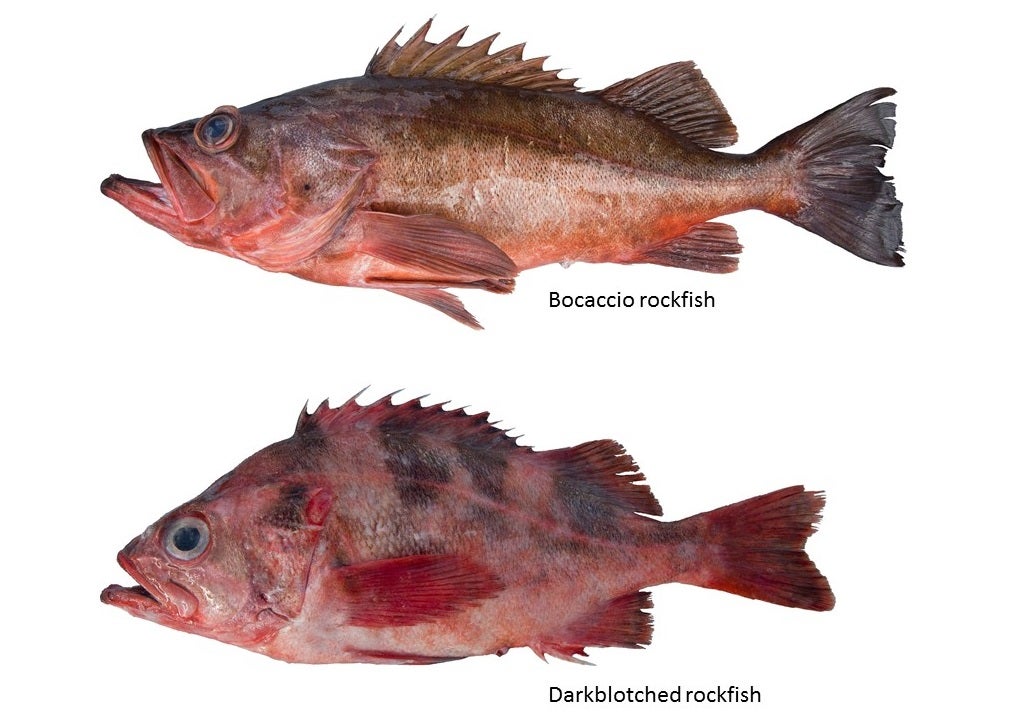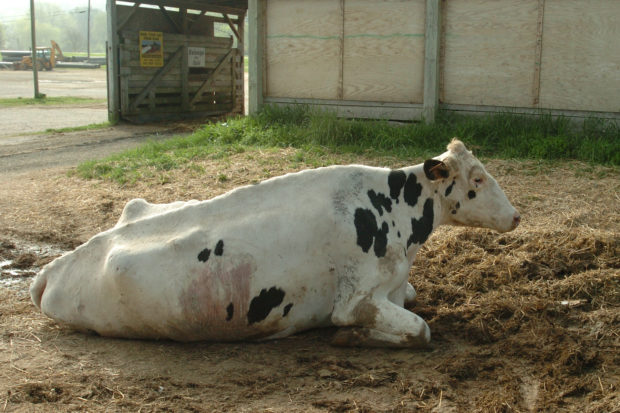Groups Sue To Protect Herrington Lake from Toxic Waste
Thursday, July 13, 2017
Read moreDedicated To People, The Planet, and All Its Inhabitants – Since 1996

Thursday, July 13, 2017
Read moreThursday, July 13, 2017
Read moreThursday, July 13, 2017
Read moreBy Shems Jud

Photos: Vicky Okimura
Rapid comebacks mean greater fishing opportunities, more sustainable seafood for U.S. markets
EDF’s Pacific team is pleased to share the news that stocks of both Bocaccio and Darkblotched rockfish have been declared rebuilt on the West Coast, well ahead of schedule. Commercial fishermen – who have worked for years to avoid catching the species – will soon be much freer to harvest them and to supply consumers with these beautiful, delicious, sustainable rockfish.
Previously declared overfished, Bocaccio and Darkblotched are among several species that have been under strict rebuilding plans in recent years. As such, they’ve been among the “constraining species” that fishermen have intentionally avoided catching since 2011, when the trawl fishery’s quota-based catch share management system was implemented. (Fishermen sought to avoid them prior to 2011 also, but under less effective management systems.)
Partly due to the fact that Bocaccio and Darkblotched commingle with many more abundant stocks, the rebuilding plans have required not just cooperation, but real sacrifice from fishermen.
A record of remarkable progress
According to NOAA: “(West Coast) Lingcod was declared rebuilt in 2005, and Widow rockfish in 2012. Both Petrale sole and Canary rockfish were declared rebuilt in 2015. Rebuilding plans remain in place for three remaining overfished species: Cowcod, Pacific Ocean perch, and Yelloweye rockfish. New assessments for Pacific Ocean perch and Yelloweye rockfish will be reviewed this summer and may be adopted in September. Cowcod is expected to be rebuilt by 2019.”
As NOAA said in their announcement, “(Rebuilding) plans required sharp reductions in commercial and recreational fisheries targeting groundfish, which included widespread fishing closures through the establishment of Rockfish Conservation Areas off the West Coast and other measures. Since 2003, managing overfished species through area closures such as the Rockfish Conservation Areas has helped to reduce fishing impacts and rebuild overfished groundfish species. In addition, the groundfish fleet has had to limit fishing for other more abundant species to avoid unintentional catch of the overfished stocks.”
EDF has worked with fishermen for years during this rebuilding process, as they’ve adapted to the new management structure and taken the painful steps necessary to avoid constraining species. They deserve a great deal of the credit for this remarkable conservation win. As Barry Thom, Regional Administrator of NOAA Fisheries West Coast Region put it, “By working together, we’ve brought Bocaccio and Darkblotched rockfish back to where they will again be part of a sustainable West Coast groundfish fishery that creates renewed opportunity for the fishing fleet, as well as more options for seafood consumers.”
By Adam Peltz
 More than a year and a half after the Aliso Canyon natural gas storage facility caused more than 100,000 tons of methane to leak into the atmosphere – amounting to be our nation’s largest-ever gas leak, California regulators continue to labor away at improving the rules that could prevent another gas storage disaster.
More than a year and a half after the Aliso Canyon natural gas storage facility caused more than 100,000 tons of methane to leak into the atmosphere – amounting to be our nation’s largest-ever gas leak, California regulators continue to labor away at improving the rules that could prevent another gas storage disaster.
That leak was a wake up call to regulators around the country charged with protecting workers, people and the environment from gas storage facility accidents.
In early 2016, California implemented some “emergency” standards for the state’s gas storage facilities, and is currently in the process of developing a more permanent solution through a rulemaking with the Division of Oil, Gas and Geothermal Resources (DOGGR), which just wrapped up its public comment period.
It is widely accepted that more oversight and smarter management of gas storage facilities can go a long way to prevent another disaster from happening. Adopting a few key improvements to the leading standards in the current rulemaking will give California the most robust, protective gas storage regulatory program in the United States.
A smart and successful natural gas storage program must include proper risk management and emergency response planning. That’s a lot of the secret sauce right there. These plans should outline the risks each facility faces, the practices and procedures for reducing those risks, and the playbook for dealing with problems. If California gets that right – along with a number of targeted rules on well integrity, monitoring and maintenance — the state will be in good shape to deal with whatever lies ahead.
California can and should be a leader on gas storage regulation in the United States. Many jurisdictions, the federal government included, are looking closely at their gas storage rules in the wake of the Aliso Canyon disaster, and California’s experience will have a huge impact on how this issue is handled at the 400+ gas storage facilities around the country. If California gets this right, it will help reduce safety and environmental risks from gas storage nationwide.

When it comes to greyhound racing, government should be part of the solution rather than the enabler of a problematic industry. Photo by iStockphoto
In Florida, the hub of a withering U.S. greyhound racing industry, regulators identified 12 greyhounds with cocaine in their blood at the Bestbet Orange Park near Jacksonville, according to The Washington Post and First Coast News. One trainer, Charles McClellan, handled all of the dogs, an incriminating fact pattern. Cocaine is just one of many . . .
The post Doping scandal adds to reputational issues for greyhound racing industry appeared first on A Humane Nation.
On July 7 (2017), California will add glyphosate, the key ingredient in Monsanto’s Roundup herbicide, to the state’s list of chemicals and substances known to cause cancer.
Before we dive into the weeds in terms of what the listing does and doesn’t mean, and may or may not lead to, let’s take a moment to recognize that this is a landmark decision in the ongoing battle against Monsanto’s flagship weedkiller.
A couple of rotten eggs finally got their due. Well, sort of.
On June 27 (2016), Jack and Peter DeCoster, former owners of a Quality Egg Co. (not kidding) were ordered to begin serving time in jail.
By Sean Wright
Institutional investors worldwide are increasingly encouraging oil and gas companies to improve and disclose their management strategies to minimize methane risk.
Methane – an invisible, odorless gas and main ingredient in natural gas – is routinely emitted by the global oil and gas industry, posing a reputational and economic threat to portfolios.
Natural gas is widely marketed as a low-carbon fuel because it burns roughly 50 percent cleaner than coal. But this ignores a major problem: methane. Natural gas is almost pure methane, a powerful pollutant that speeds up Earth’s warming when it escapes into the atmosphere.
Last month marked a significant milestone in investor action on the methane issue. The Principles for Responsible Investment (PRI) launched a new initiative representing 35 investors and U.S. $3.8 trillion in assets that will engage with the oil and gas industry across five different continents to improve its methane management and disclosure practices. The PRI initiative complements existing methane engagement efforts focused on the U.S. led by the Interfaith Center on Corporate Responsibility and CERES.
EDF Senior Manager Sean Wright recently sat down with Sylvia van Waveren, a Senior Engagement Specialist with Robeco Institutional Asset Management, a Dutch-based investment firm managing over $160 billion, to discuss the matter and understand why some investors are keen to affect the status quo on methane.
Wright: Why is methane a focus of your engagements? What do you see as the risks of unmanaged methane emissions?
van Waveren: Methane is one of the most important drivers of engagement with the oil and gas industry. We invest in oil and gas companies worldwide. A year ago, we started engaging them, specifically on climate change – and within that the methane issue is included.
In the past, methane was viewed as a U.S. shale gas issue, but more recently it has become important in Europe as we learned that methane is a powerful greenhouse gas. So in that sense, we learned a lot from the U.S. discussions and we still do.
I would like to stress that we see the methane issue more as a business opportunity than a risk. What we often say to companies is that methane is a potential revenue source. It would be a waste if companies do not use it.
Wright: The scope of PRI’s initiative is global, with investors from 3 different continents as far away as Australia and New Zealand, and a plan to engage with companies from the Latin America, Europe, North America and Asia-Pac. What does this level of global collaboration convey about methane emissions?
van Waveren: I am happy and it is good to see that others have taken up the seriousness of this issue, as well. Methane is no longer a U.S. only problem. The issue is being raised and discussed in all kinds of geographies.
I’m a firm believer in collective engagements. They can be a powerful force when the issue is not contained within borders. That is the case with greenhouse gases. So yes, I’m happy to see the PRI initiative taking off and I am an active believer in getting this solved and bringing attention to this subject.
Global investor touts methane opportunity with oil & gas industry
Click To Tweet
Wright: In your conversations thus far with companies about methane, what resonates best when making the business case for improving methane management and disclosure?
van Waveren: When we talk about motivation at the company level, I have to be honest, it’s still early days. The European companies are talking in general terms and just now conceptualizing methane policies. If we’re lucky, they have calculated how much methane is part of their greenhouse gas emissions. And if we’re more fortunate, they are producing regional and segregated figures from carbon, but it’s really very meager how motivated the companies are and what triggers them most.
I really feel we should emphasize more with companies to get them motivated and to really look at the seriousness of methane. One issue that is particularly bothersome is that many companies do not know how to calculate, estimate and set targets to reduce methane. It is still a mystery to many of them. That’s why we come in with engagements. We need to keep them sharp on this issue and ask them for their actions, calculations and plans.
Wright: Who are other important allies that have a role in solving this problem, and why?
van Waveren: We always would like to have an ally in the government. For example, carbon pricing or carbon fixations are all topics that we look for from the government. But in practice, that doesn’t work. Governments sometimes need more time. So we do not always wait for the government. When companies say they will wait for government, we say, “You should take a proactive approach.”
We rely very much on our knowledge that we get from within the sector. We review data analyses and make intermediate reports of scoring. We find best practice solutions and we hold companies accountable. There are also times when we name names. So in that sense, that is how engagement works. The data providers and other organizations with good knowledge and good content on methane – and EDF is certainly one of them – are very instrumental to get the knowledge that we need.
Wright: Can you give me an example of a widespread financial risk facing an industry in the past that was proactively improved by investors leading the charge – similar to this initiative?
van Waveren: More than 20 years ago, we had a greenhouse gas issue – acid rain. Investors helped solve that problem. Because of this, I’m hopeful that investors can also play a positive role in reducing methane.
I would also say the issue of Arctic drilling. Not so long ago, this was top of mind when we talked to our portfolio companies. A lot of companies have now withdrawn from Arctic drilling, especially from offshore Arctic drilling. I think investors were quite successful in sending a clear signal to the industry in a collective way that we didn’t see Arctic drilling as a good process. Maybe profitable – if at all – to the companies, but certainly not for the environment.
Wright: Thank you, Sylvia. We really appreciate your time and your thoughtful answers showing how investors can be part of the solution on methane.

It was the dairy industry’s own inattention to good animal husbandry that annually produced tens of thousands of downer cows – animals too sick or injured or battered to walk, and dragged into slaughterhouses to make ground beef.
Photo by Kathy Milani/The HSUS
Last week, a heat wave, in tandem with a lack of adequate housing and other safeguards for the animals, resulted in thousands of dairy cows perishing in the punishing heat of California’s Central Valley. It’s one of the worst weather-related incidents to strike dairy herds in recent memory, and rendering plants in California are so . . .
The post California dairy cows perish, while the state’s almond growers see opportunities for disrupted milk market appeared first on A Humane Nation.